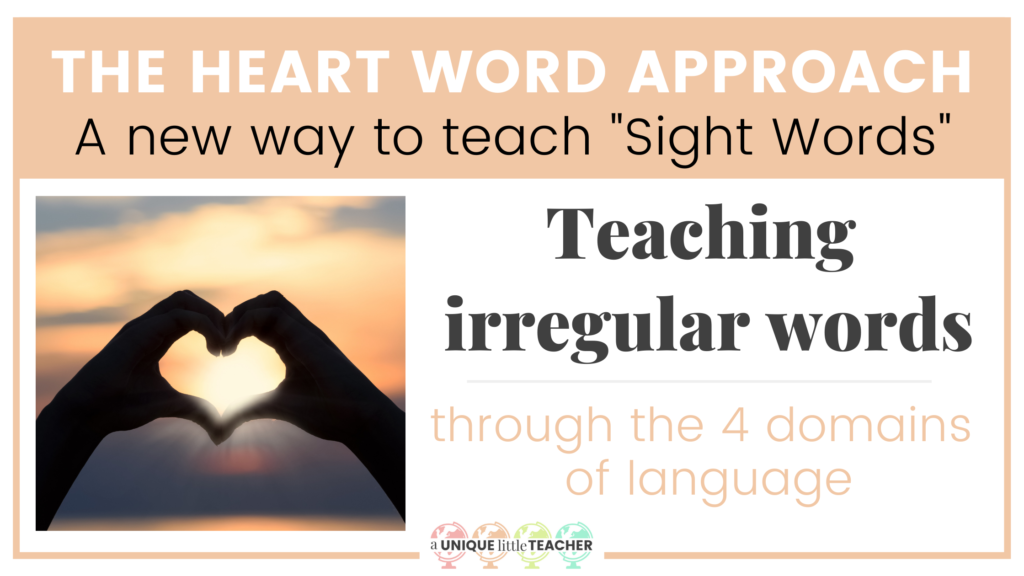
Heart Words are the new “sight words.” It is 2022. We are done giving students lists of hundreds of unrelated words to memorize. Instead, we are using instructional practices backed by the Science of Reading. We connect word learning to phonics skills through the mental process of orthographic mapping.
Already overwhelmed by all that jargon? No need to worry! Teaching heart words is actually a lot more simple than it may sound. Read on the learn the most effective strategies for making irregular heart words stick.
Completely new to the word of Heart Words? Start here: What are Heart Words?
Guiding Principles of the Heart Word Approach
- Most words in English are predictable, as long as we understand the “code”. Some words, however, do not follow these rules, which is why we have to intentionally study them. Even within these irregular heart words, though, there are still plenty of parts that DO follow the rules.
- It is most effective to group heart words based on their irregular heart parts and teach them together. For example, the heart words “could”, “would”, and “should”, all have the same heart part (“oul”). It is helpful for students to practice them around the same time. If you need a tool for creating your own lists, you can check out my Heart Words Phonics Database. If you’d rather have all the work done for you, you can snag my collection of 630 High Frequency and Heart Words Mapped and Sorted by Sound from TpT.
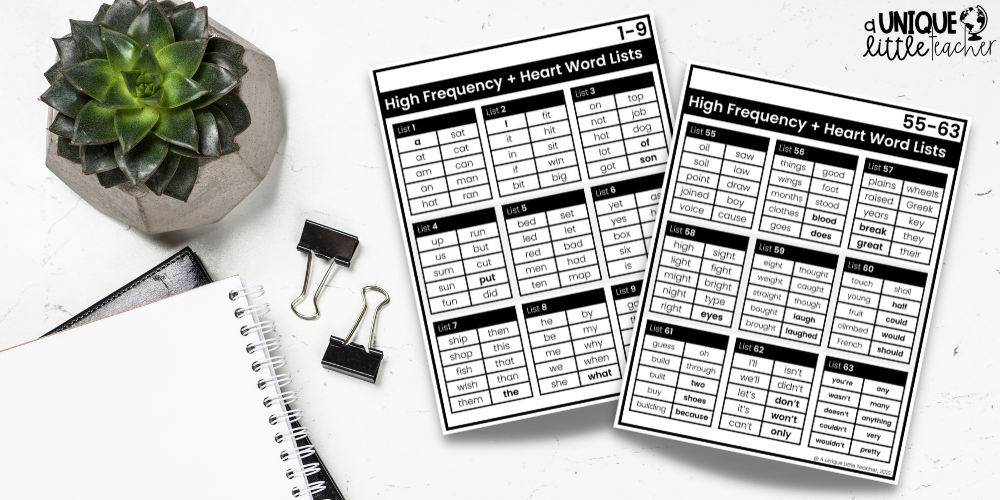
- When teaching any language skill, especially to our multilingual learners, it is important that they have exposure to the skill in all four domains of language. For this reason, the heart word approach is structured around Listening, Speaking, Reading, and Writing.
Step 1: Listen to the Heart Word

For many of our students, their listening comprehension skills are the strongest of the four domains. This is why it is helpful to start here when introducing a new heart word. Here’s how it looks:
- First, say the word aloud, in isolation, for students to listen to.
- Next, have students repeat the word.
- Say sentences that contain the new heart word. This helps students– especially our multilingual learners– to connect the word to meaning.
- Incorporate movement to increase engagement and retention. Tell students to do an action when they hear our target heart word in each sentence (like stand up, jump, or clap).
Step 2: Speak using the Heart Word
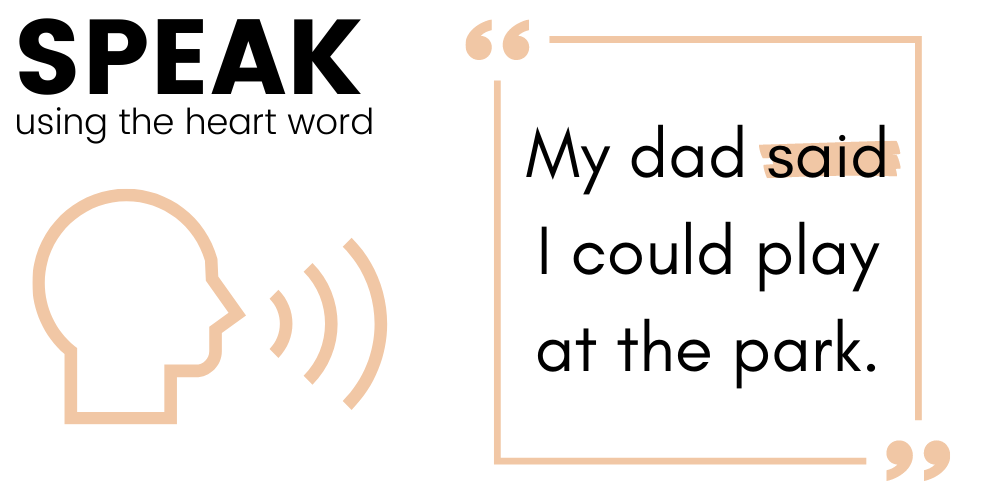
In step one, students listened to the spoken heart word, utilizing receptive language. Now it’s time to move to productive language (speaking). Begin by working as a group to brainstorm sentences that contain the heart word. Then, if students feel comfortable, have each student create a sentence individually to speak to the group.
Step 3: Write the Heart Word

3a. Analyze the spelling of the heart word.
Orally segment the word into its phonemes (sounds) and explicitly talk about each sound in the word. Learners can use their fingers, physical manipulatives (like blocks or counters), or can draw spelling boxes or lines to divide the sounds they hear.
Next, talk about the spelling of each phoneme. Ask the learners which grapheme normally spells each sound. For the word “said,” students will likely spell it phonetically as /s/ /e/ /d/. Explain that we normally spell the short /ĕ/ sound with the letter “e”, but in this word, it is spelled with the vowel team “ai.” This is the irregular heart part. All other parts of the word are spelled phonetically as expected.
If you are using the heart word practice sheets, I find it helpful to color-code the phonetic and irregular phonemes in the word.

3b. TCCC (Trace, Copy, Cover, Closed)
This is a popular practice activity in the Orton Gillingham approach. It helps solidify the heart word in the student’s mind through visual and muscle memory.
- First, students trace the heart word three times. You can handwrite the word for them to trace or use a handwriting font for students on printed worksheets. My favorite are Kimberly Geswein’s fonts, which are available for FREE on TpT for personal use.
- Next, they copy the heart word three more times while looking at their traced word.
- After that, they cover the heart word by folding their paper or covering it with a physical object and have to spell it from memory three more times.
- Finally, they flip their paper over and write the heart word three times with their eyes closed.

3c. Create an anchor sentence.
Many students say this is their favorite step because their sentences can be as wild or silly as they would like. The two requirements for their anchor sentence are that it (1) contains the target heart word and (2) that it has one or more “trigger words” that contain the heart part. Again, it is helpful for students to color-code their written sentences to really be able to see the heart parts in action. Here are some examples from real students:
- Heart word: of
- Sentence: The ocean is full of octopus farts.
- The “o” in “octopus” and the “f” in “farts” helped remind him that the word “of” is spelled “o + f.” You better believe he never forgot that one!
- Heart word: does
- Sentence: Does your shoe hurt your toes?
- I loved the sentence this student created because she was able to use the “oe” spelling pattern from the heart word “does” to represent several different phonemes. This really helped her remember that irregular spelling and allowed her to connect that knowledge to other phonetic words.

Step 4: Read the Heart Word
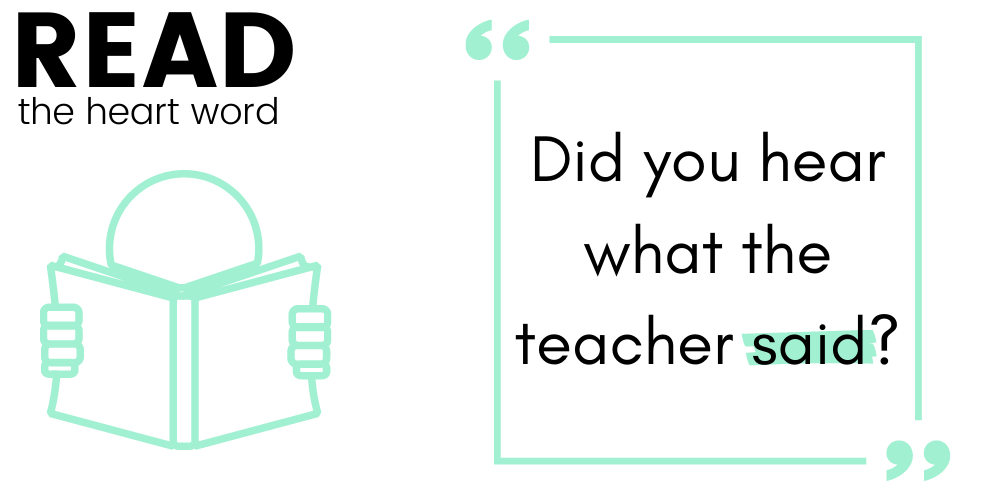
Students read sentences containing the new word. It is best if these sentences are fully decodable using the phonics skills they have already learned. This helps promote phoneme-grapheme correspondence.
In future sessions, you will want students to practice reading all of the heart words they have learned. You can use these High Frequency and Heart Words Slides that have the words mapped by phonics feature. It is important that students have already done the work of mapping the words themselves before they see these slides, though. We did this in step 3a, so if you are following this procedure, you’ve got it covered!
Notes About our Multilingual Learners
As an English Language Development teacher, I always try to integrate best practices for teaching multilingual learners (ELLs) in my classroom. This approach uses proven techniques that are successful for teaching English Learners, like movement, multimodalities, and connections to prior knowledge.
Depending on the needs of your student population and the literacy skills that they already have in another language, it can be helpful to engage in trans-languaging activities around heart words. This simply means making connections between the English word and its translation (or lack thereof) to a student’s spoken language other than English.
For example, when teaching the heart word “said”, you can explain to students that it is a past tense verb. It is related to the word “say” and “says”, and its spelling and pronunciation change based on how it is used in context. They can then explore how this conjugation process works in other languages they know. In Spanish, you could connect these variations in tense to the word “decir” and its various conjugations like “dice”, “dijo”, and “decía.”
Want to know more?
- Read all about the Heart Word Mastery Game Plan that I use to make sure my students succeed in learning to read and write their heart words.
- Grab everything you need to get started with the Heart Words DIY Templates or the Done-for-you Lists and Slides from my TpT Shop.
- Ask away! Leave any questions you have about how to teach heart words in the comments, or connect with me on social media to chat more!



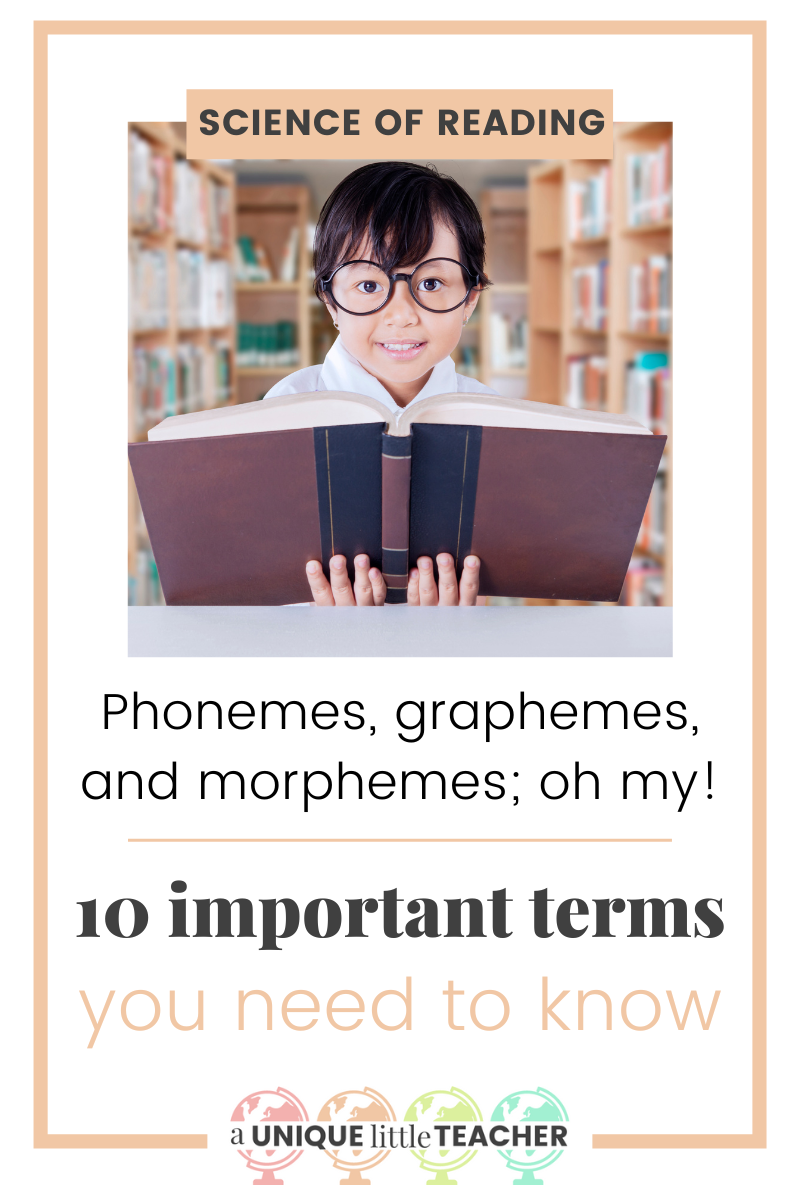
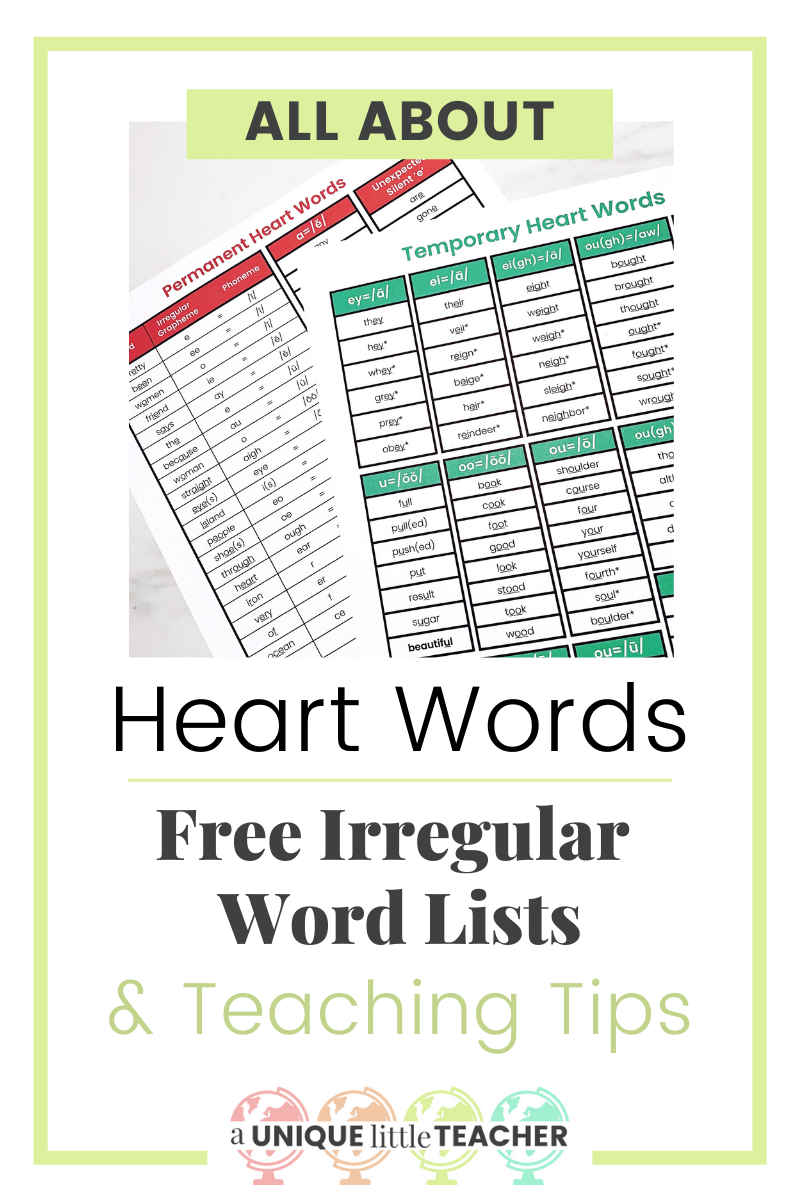


2 Responses